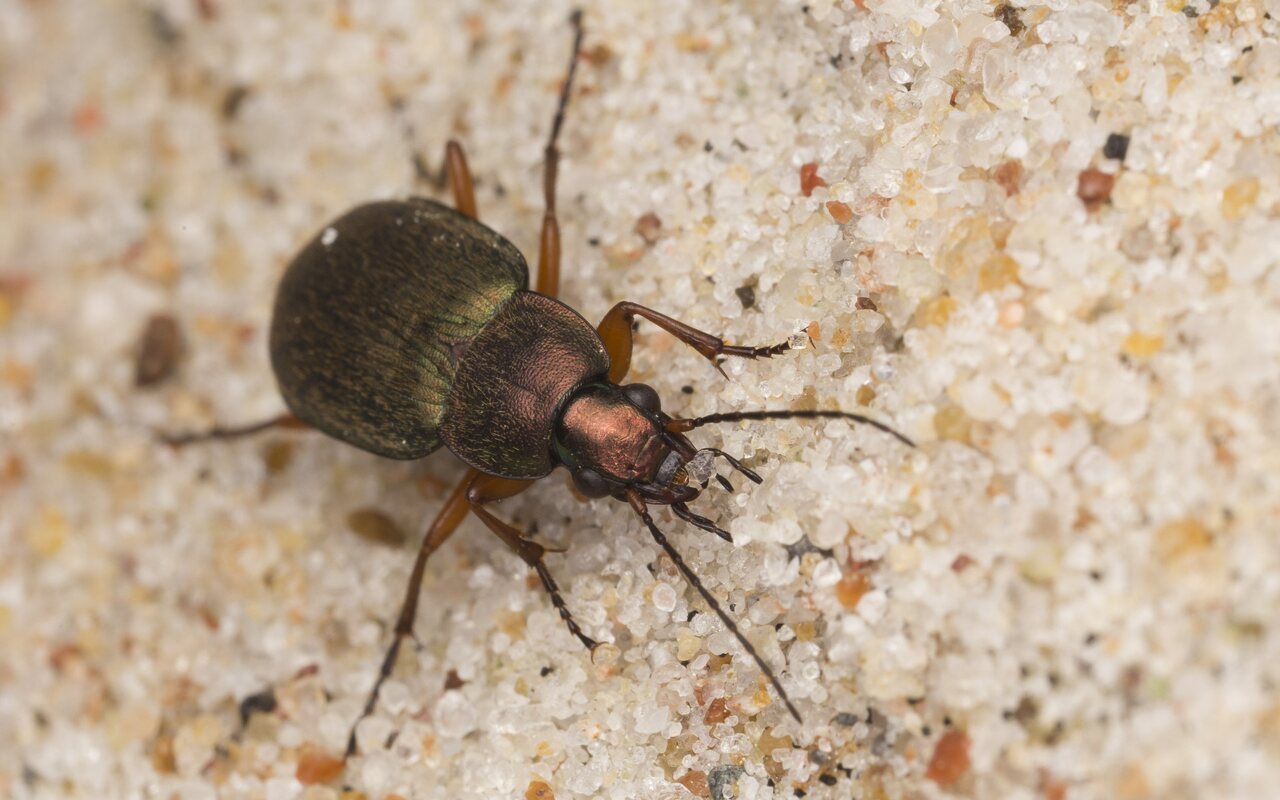
Chlaenius nigricornis · juodaūsis žalsvažygis
- Chlaeniellus nigricornis
- Schwarzfühler-Grünkäfer, Sumpfwiesen-Sammetläufer, Schwarzhörniger Samtlaufkäfer, Sumpf-Samtläufer
ukbeetles.co.uk/chlaenius-nigricornis
This widespread Palaearctic species occurs continually from France to eastern Siberia and is generally common in southern lowland areas throughout this range, it occurs throughout Europe except for the far north it is absent from North Africa but is known from many of the Mediterranean islands and is recorded from the Faroe Islands, it remains generally common across southern and central Europe but has declined over recent decades in the north.
Adults are diurnal predators of other insects and their early stages, they usually occur in small numbers and most often in wetland habitats such as lake and river margins, fens and marshes, sedge and reed beds and coastal and moorland pools, they occur year-round and peak in abundance from May until July. Breeding occurs in early spring and the predatory larvae develop during May and June in much the same habitats as the adults.
10-12 mm. Very distinctive due to the extensively punctured and pubescent dorsal surface and bright metallic colour which is variable but typically with the head green or coppery, the pronotum green with reddish or coppery reflections and the elytra brilliant green although these can be dark or almost black. Head with large convex eyes and short, almost parallel temples, surface extensively flattened, and with fine transverse wrinkles and punctures, inner margin of each eye with a single setiferous puncture, antennae densely pubescent from the fourth segment, black with the basal segment pale, at least underneath. Mandibles symmetrical, sharp and without a pore on the outer margin. Pronotum transverse, evenly curved from protruding anterior angles to obtuse and rounded posterior angles and more or less straight across the base, surface longitudinally impressed medially and with narrow longitudinal basal fovea, closely and rather strongly punctured throughout and often confluently towards the lateral margins and finely bordered laterally. Elytra almost parallel-sided from rounded shoulders to a weak subapical constriction, striae narrow and finely punctured, interstices densely punctured and pubescent. Legs vary in colour.‥
0 comments
Add a comment
Comments